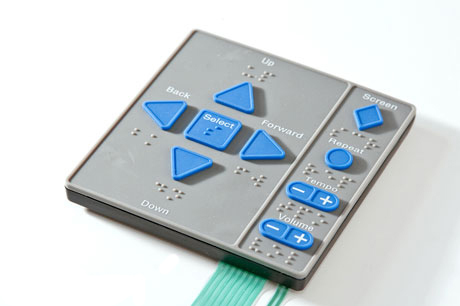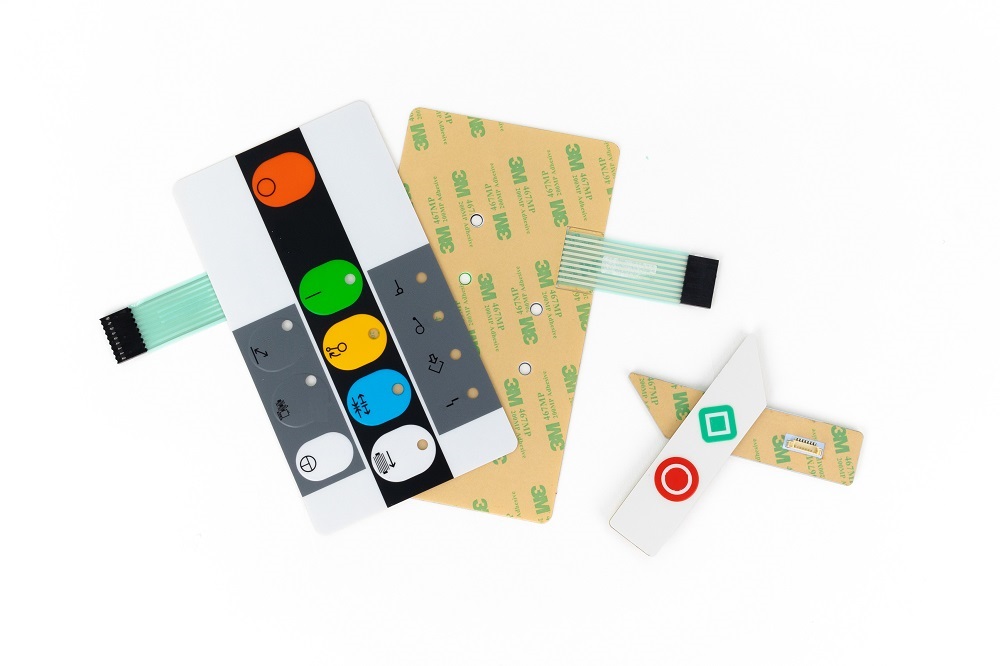Top Features to Look for in a High-Quality Membrane Switch
Top Features to Look for in a High-Quality Membrane Switch
Blog Article
Comprehending Membrane Switches: The Secret to Trusted and resilient Controls

What Are Membrane Layer Switches?
Membrane layer buttons are an advanced option in the realm of user interface technology, integrating functionality and style seamlessly. These gadgets act as an interface in between users and digital systems, integrating several parts right into a small layout. Generally built from adaptable, thin layers of products, membrane layer switches are made to react to touch, making it possible for customers to engage with machinery and digital devices properly.
The primary aspects of a membrane button consist of a published circuit layer, graphic overlay, and a spacer layer that stops unintentional activation. The visuals overlay can be customized to show brand identity or user preferences, enhancing looks while making certain use. Membrane switches are typically used in different applications, consisting of medical devices, customer electronics, and commercial equipment, owing to their longevity and resistance to ecological variables such as moisture and dust.
Among the vital advantages of membrane layer buttons is their ability to endure wear and tear, making them suitable for high-traffic atmospheres. Additionally, they are light-weight and require very little room, permitting for ingenious layouts in product growth. Overall, membrane switches stand for a effective and practical option for contemporary digital interfaces, weding innovation with user-centric style principles.
How Membrane Layer Changes Work
The operation of membrane layer switches over joints on a basic yet efficient system that converts user input into electronic signals. When a user presses the switch, the leading layer deforms, allowing a conductive element in the circuit layer to make contact with an equivalent conductive pad on the bottom of the visuals overlay.
The layout of membrane buttons can vary, but they often incorporate domes or responsive elements to offer responses to the customer, improving the overall experience - membrane switch. The products utilized in membrane layer buttons, such as polyester or polycarbonate, contribute to their longevity and resistance to ecological variables, consisting of wetness and dust. In addition, the printed circuits are typically enveloped, which safeguards them from damage in time.
Advantages of Membrane Layer Buttons

Furthermore, membrane switches are known for their durability. Created from robust products, they are resistant to dirt, wetness, and physical wear, which considerably expands their life-span compared to typical mechanical buttons. This longevity makes them specifically suitable for high-traffic atmospheres and applications calling for durability.
One more considerable benefit is the ease of cleansing and maintenance. The smooth surface of membrane switches over minimizes dirt accumulation and is commonly invulnerable to spills, making them perfect for setups that require constant sanitization.
In addition, membrane layer switches offer a streamlined profile, resulting in a thinner style that can be integrated into numerous devices without adding mass. This attribute not just improves the visual appeal but additionally adds to a more ergonomic item layout.
Applications of Membrane Layer Switches
Flexible and easy to use, membrane buttons locate applications across a large range of markets, consisting of medical tools, consumer electronics, and industrial tools. In the clinical field, these switches are indispensable to devices such as diagnostic tools, patient monitoring systems, and infusion pumps, where reliability and simplicity of cleaning are important. Their capability to maintain and withstand extreme environments capability makes them perfect for such applications.

In consumer site electronic devices, membrane buttons are utilized in products like microwaves, washing devices, and remote controls - membrane switch. Their streamlined layout enables user-friendly individual interfaces, boosting the total user experience while providing sturdiness and resistance to damage
Industrial devices likewise gains from membrane buttons, especially in control panels for machinery and automation systems. These buttons supply security against dust and dampness, guaranteeing regular efficiency in challenging atmospheres. Their personalized attributes permit producers to customize them to certain operational requirements, boosting effectiveness and performance.
Selecting the Right Membrane Switch
When selecting a membrane layer switch, it is crucial to think about various factors that affect performance and suitability for specific applications. The primary factors to consider include ecological conditions, responsive feedback, sturdiness, and design specs.
First, assess the operating atmosphere; switches revealed to moisture, chemicals, or extreme temperature levels call for certain materials to guarantee longevity and performance. Next, assess the requirement for tactile comments. Relying on user interaction, some applications might gain from a tactile action to verify activation, while others may prefer a non-tactile layout for aesthetic reasons.
Resilience is another critical variable; membrane buttons ought to be designed to stand up to frequent usage, influences, and abrasion. Make certain the chosen switch can sustain the expected lifecycle, particularly in high-usage situations.

Conclusion
Finally, membrane switches act as important parts in the layout of resilient and reputable control systems across various markets. Their compact style, incorporated with robust building and customizable features, boosts user communication while making sure great site long life popular settings. The convenience of membrane layer changes permits customized solutions that satisfy certain operational demands, strengthening their significance in contemporary technology. As markets proceed to evolve, the significance of incorporating reliable membrane button remedies can not be overstated.
Membrane switches over represent an important facet of modern user interface design, mixing functionality with resilience in additional resources numerous applications.Membrane layer buttons are a sophisticated service in the world of individual interface modern technology, incorporating capability and design perfectly. Typically constructed from versatile, slim layers of materials, membrane layer switches are created to respond to touch, allowing individuals to connect with machinery and electronic devices properly.
The design of membrane layer switches can vary, yet they frequently integrate domes or responsive components to supply responses to the individual, improving the overall experience.In verdict, membrane changes serve as important parts in the layout of resilient and trusted control systems across numerous markets.
Report this page